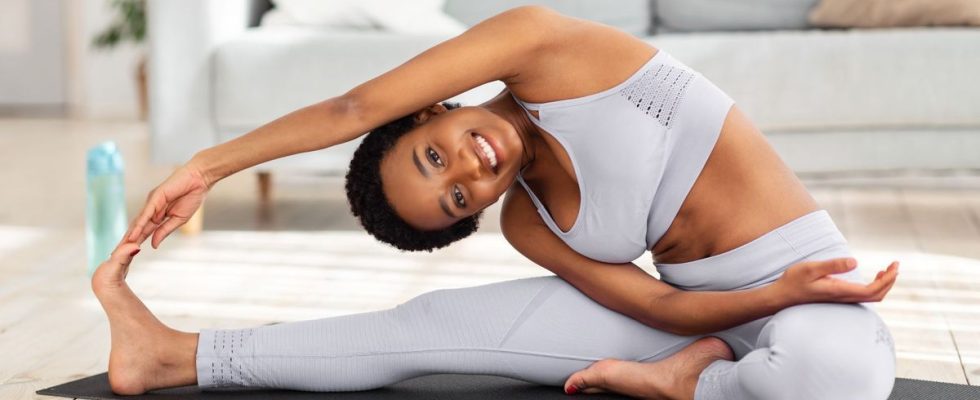Published on
Updated
Reading 2 min.
in collaboration with
Vincent Roche (Physiotherapist)
As children, we are often very flexible. But over time, this flexibility diminishes, especially when it is not maintained. How to regain flexibility? Here are the tips from Vincent Roche, physiotherapist.
When you were little, you were able to do the splits without any problem but today that is no longer the case? This is normal if you haven’t had the reflex to maintain your flexibility. How can we gradually regain it? The answers of Vincent Roche, physiotherapist.
Movement, a mechanism which consists of three factors
Before knowing how to regain flexibility, you must first define what a movement is. Indeed, it is by putting your body in movement, and by stretching more precisely, that flexibility will increase. “Movement is enabled by the combination of three factors :
- Flexibility, which is the possibility of moving two points away from each other;
- Motor control, to sequence the movement, will be operated by the brain;
- The force necessary to activate the arm, the leg… which will make the movement” reminds the physiotherapist.
To gain flexibility, you have to work on flexibility
According to Vincent Roche, to gain flexibility, you have to work on your flexibility. “This therefore involves stretching the muscles, nerves, ligaments, aponeuroses… All the structures making up the leg or the arm or the part of the body that is being stretched. explains the healthcare professional.
We can therefore make our body more flexible, within the physiological limits that are specific to each person. “For overall flexibility work, we can rely on the yoga where the pilates” advises the physiotherapist again. Is it possible to do it at home? “Yes, there are excellent videos or very well-made applications that allow you to engage in exercises alone at home” he confirms.
Stretch well without stopping at the slightest pain
When you stretch, you can feel pain. But how can we distinguish real pain from the simple, sometimes unpleasant sensation of stretching? “That’s the whole point. A real pain, muscular, for example, will be acute and very painful. Nerve pain gives a burning sensation… You should not stop at the slightest unpleasant sensation linked to stretching because yes when you stretch it hurts a little” specifies Vincent Roche.
Good in his body, good in his head!
Adopt a healthy lifestyle and work progressively
Finally, the physiotherapist reminds us of some common sense advice. “We can start by warming up and working gradually, a little more each day. Finally, you have to remember to hydrate well, eat a balanced diet and, above all, sleep well, so as not to be stiff: that’s the basis for successfully stretching and gaining flexibility”.

